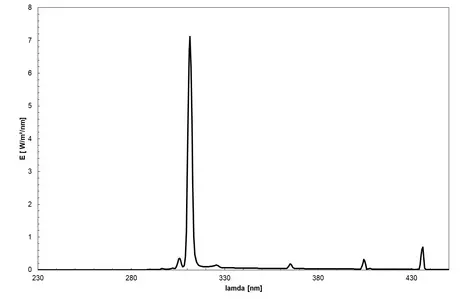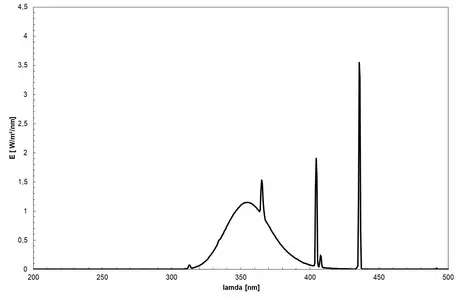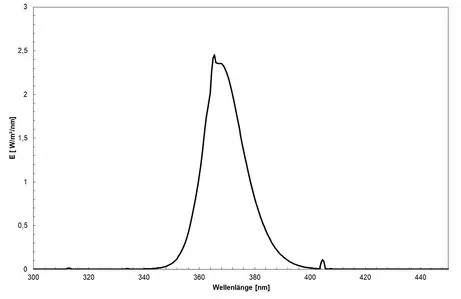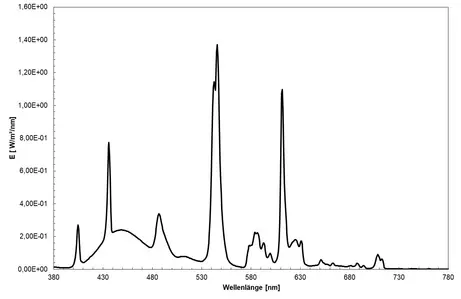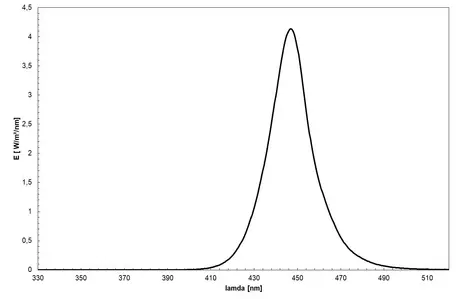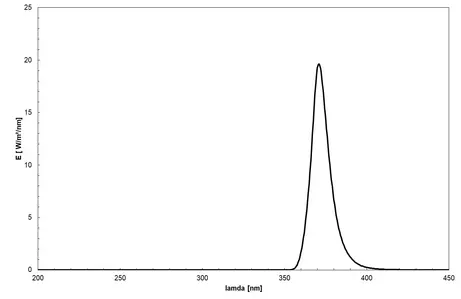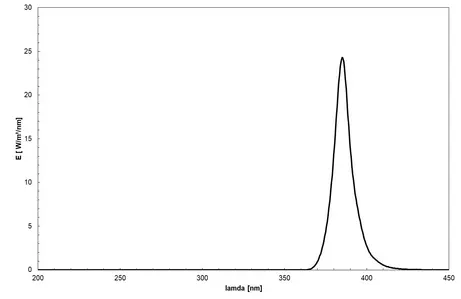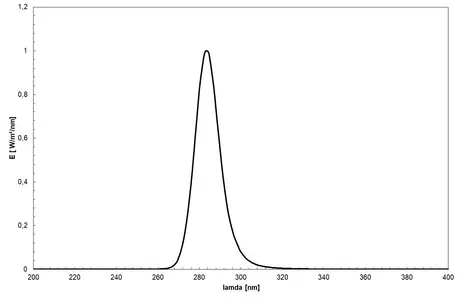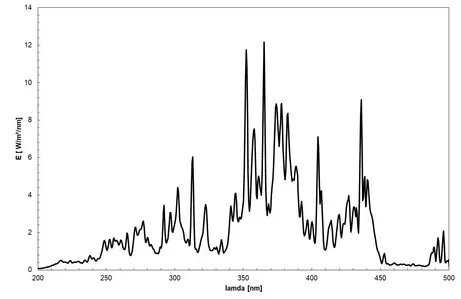Spectra of UV lamps and UV LEDs
Our database offers precise and reliable spectra of a wide range of UV LEDs and UV lamps. The spectra are typical for the respective class. Therefore, we do not provide type designations.
All spectra were measured in our laboratory and can be used freely. The measurements were performed in accordance with CIE 250:2022 „Spectroradiometric Measurement of Optical Radiation Sources". We have also provided some information on various UV light sources. If you have any questions or queries, please do not hesitate to contact us.
The UV-A, UV-B and UV-C components of the emission can be calculated from the spectra. Instructions on how to calculate the irradiance from the spectral irradiance can be found here.
Here you can download the spectral data of UV lamps and UV LEDs:
Spectra of medium pressure mercury lamps
- Typical outputs: 1 kW - 40 kW
- Doping:
- HG
- iron
- gallium
- ozone-free and ozone-generating
- Links:
Spectra of high-pressure mercury lamps
- Typical power: 100 W - 40 kW
- Doping:
- none
- ozone-free and ozone-generating
- Links:
Spectra of low-pressure mercury lamps
- Typical power: 4 W - 600 W
- Doping:
- none
- ozone-free and ozone-generating (185 nm)
- Links:
Spectra of UV fluorescent lamps
- Typical power: 4 W - 200 W
- Doping:
- none (emission by the phosphor layer)
- ozone-free
- Links
- Fluorescent lamp (Helarium)
- Fluorescent lamp (UVB-311)
- Fluorescent lamp (UVB broadband)
- Fluorescent lamp(UVA-340)
- Leuchstofflampe-Lampe (100W, light color 79)
- Fluorescent lamp(BlacklightBlue 352 nm)
- Fluorescent lamp (BlacklightBlue 368 nm)
- Fluorescent lamp (light color 05)
- Fluorescent lamp (Philips Actinic BL)
- Fluorescent lamp (6500 K)
Spectra of excimer lamps
- Typical power: 10 W - 1000 W
- Excimer:
- Kr-Cl
- usually ozone-generating
- Links:
Spectra of blue-emitting LEDs and LED modules
- Typical wattages: 1-5 W as single LED, as LED module also up to 2000 W
- Doping:
- none
- ozone-free
- Links:
Spectra of UVA LEDs and UVA LED modules
- Typical wattages: 1-5 W as single LED, as LED module also up to 2000 W
- Doping:
- none
- ozone-free
- Links:
Spectra of UVB LEDs and UVB LED modules
- Typical wattages: 1-4 W as single LED, as LED module also up to 200 W
- Doping:
- none
- ozone-free
- Links:
Spectra of UVC LEDs and UVC LED modules
- Typical wattages: 1-4 W as single LED, as LED module also up to 200 W
- Doping:
- none
- ozone-free
- Links:
Spectra of xenon lamps, xenon short arc lamps and xenon flash lamps
- Typical power: 150 W - 5000 W
- Doping:
- none
- ozone-free and ozone-generating
- DC-operated or pulsed operated
- Links:
Spectra of metal halide lamps
- Typical power: 400 W - 4000W
- Dopants:
- Metal halides
- usually ozone-free
- Links:
Spectra of halogen lamps
- Typical power: 10 W - 1 kW
- Doping:
- none
- ozone-free
- Links:
Spectra of deuterium lamps, D2 lamps
- Typical power: 10 W - 300 W
- Doping:
- none
- ozone-generating and ozone-free
- Links:












